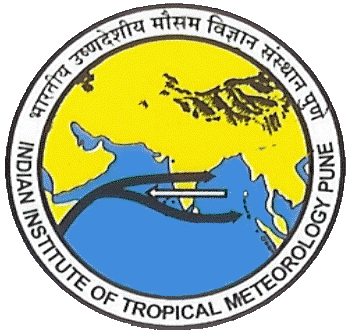Monsoon Onset Over Kerala
The beginning of monsoon season is marked by its onset over Kerala coast which is associated with lot of changes in the large-scale dynamical parameters as well as local moisture parameters. Prediction of monsoon onset over Kerala (MOK) is very much essential due to its socio-economical impact. Operationally, IMD has been declaring MOK subjectively based on the rainfall over Kerala, the value of outgoing long wave radiation (OLR) as well as the strength and vertical extent of the lower tropospheric zonal wind. In this report, emphasis is given to devise a criterion from circulation and rainfall in the dynamical model for the prediction of MOK.
For this, we define two indices – one from rainfall over Kerala (ROK) and another based on the strength of low level jet (LLJ). ROK is defined as the rainfall area-averaged over 74°-78°E and 8°-12°N; whereas LLJ is defined as the zonal wind at 850 hPa averaged over 55°-75°E and 5°-12°N.
Onset is defined on day 't' if ROK > 5 mm/day and LLJ > 8m/s and also if ROK and LLJ are either more than those at day 't-1' for consecutive 5 days or when the average value of ROK and LLJ for these 5 days exceed 1.5 times their value at t-1.
Conditions are relaxed in those cases when the MOK date is either obtained after 15 June or no MOK is obtained from the above mentioned criteria. The criteria is then checked for only three consecutive days and also the cut-off value for the average value of the indices for 5 days is made 1.2 times the original value, instead of 1.5 times. For this relaxed criteria, ROK > 2.5 mm/day and LLJ > 4 m/s at day t.
The above-mentioned criteria is checked for each ensemble member and MOK is obtained for all of them. The mean day of all MOK is given as the MOK from the model. Since the long term mean date of MOK is around 1st June with a standard deviation of ~8 days [Ananthakrishnan and Soman, 1988], the forecasts starting from16th May initial condition have been utilized for defining the date of MOK.
